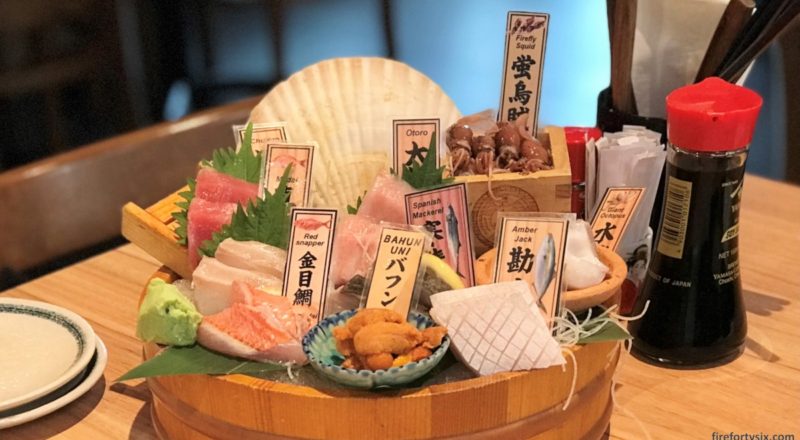Unless you’re a fan of closely-monitored packaged tours, Japan’s borders are still effectively closed to tourists. This might change soon, or it may not. Nobody can say for sure. Even when borders do eventually open, the first few months are likely to be chaotic. Hotels and restaurants will be struggling to cope with the inevitable flood of incoming tourists.
Like many Singaporeans, Japan is high on our list of holiday destinations. But until the situation settles down, we’ll have to satisfy our Japanese food cravings locally. We already have our preferred restaurants for tonkatsu, tempura and ramen, but have been searching for a place for good sashimi that doesn’t cost a bomb.
That’s how we ended up on a weekday afternoon at Izakaya Niningashi, located at 2 Craig Road in the Tanjong Pagar neighbourhood. In true izakaya fashion, they offer a huge array of Japanese food, and their wide selection is displayed prominently at their entrance.

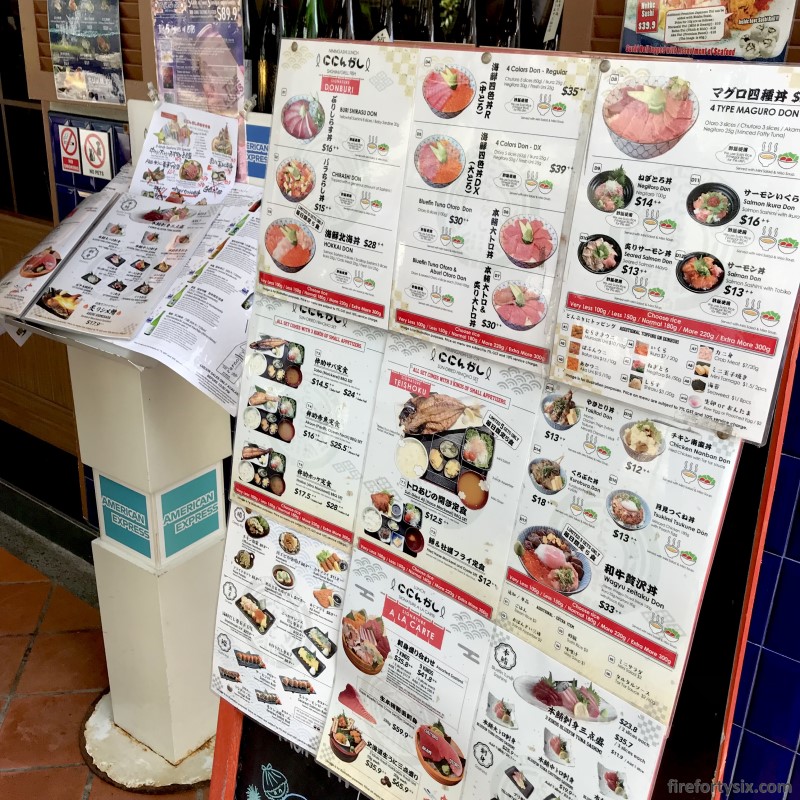
It happened to be a public holiday that day, which was probably why we were able to snag a reservation at the popular eatery. They’re not a small place, but seats get taken up very quickly and reservations via Instagram DM are highly recommended. You could try your luck without one, but be prepared to be disappointed.
The Wife is a big fan of sun-dried himono and Niningashi has an unusually large range to choose from as part of their lunch teishoku sets. The ala carte menu was also quite tempting, and I was eyeing their Assorted Sashimi (9 Kinds) at S$41.80++, which is quite an attractive price in Singapore.

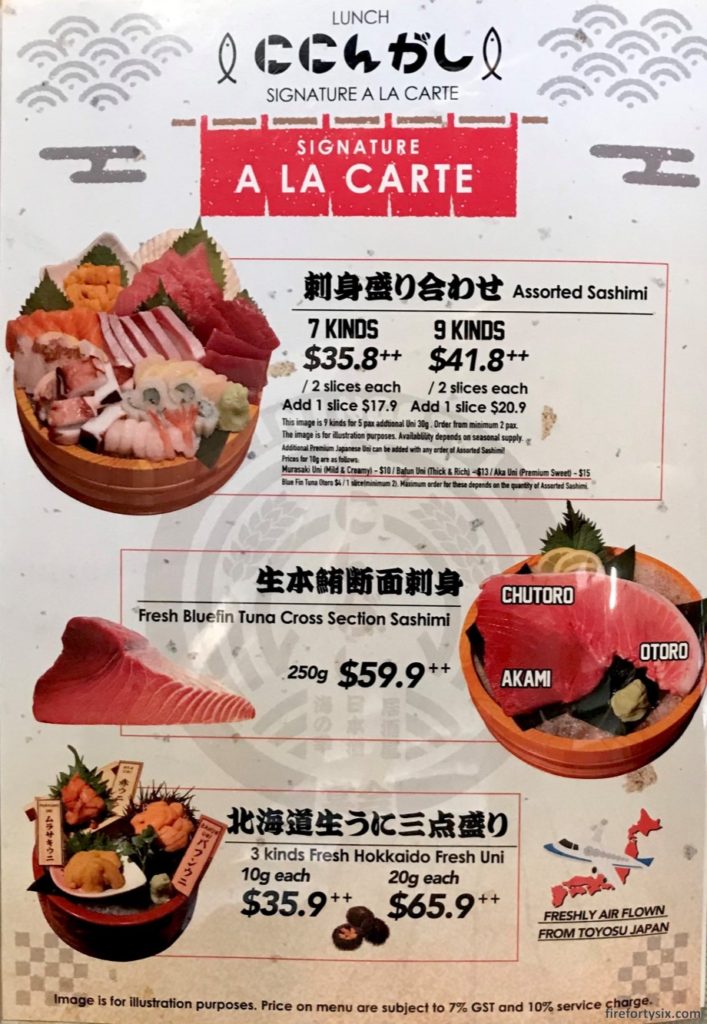
Before I placed the order though, I noticed a separate loose leaf menu highlighting the specials of the day. Many had been crossed out, but the item that caught my attention was the “8 kinds Sashimi DX Special”. It specifically listed the fish that would be served, and had many that we liked.
I was particularly excited to see Hotaru Ika (firefly squid), a seasonal item that is as cute looking as it is flavourful. We managed to catch the attention of one of the waiters zipping around and asked her what the difference was between the usual Assorted Sashimi and this DX Special.
She shared that the normal assortment includes usual suspects like salmon and akami, with the chef deciding on the actual selection. The DX version, the other hand, comprises premium choices that are explicitely listed.
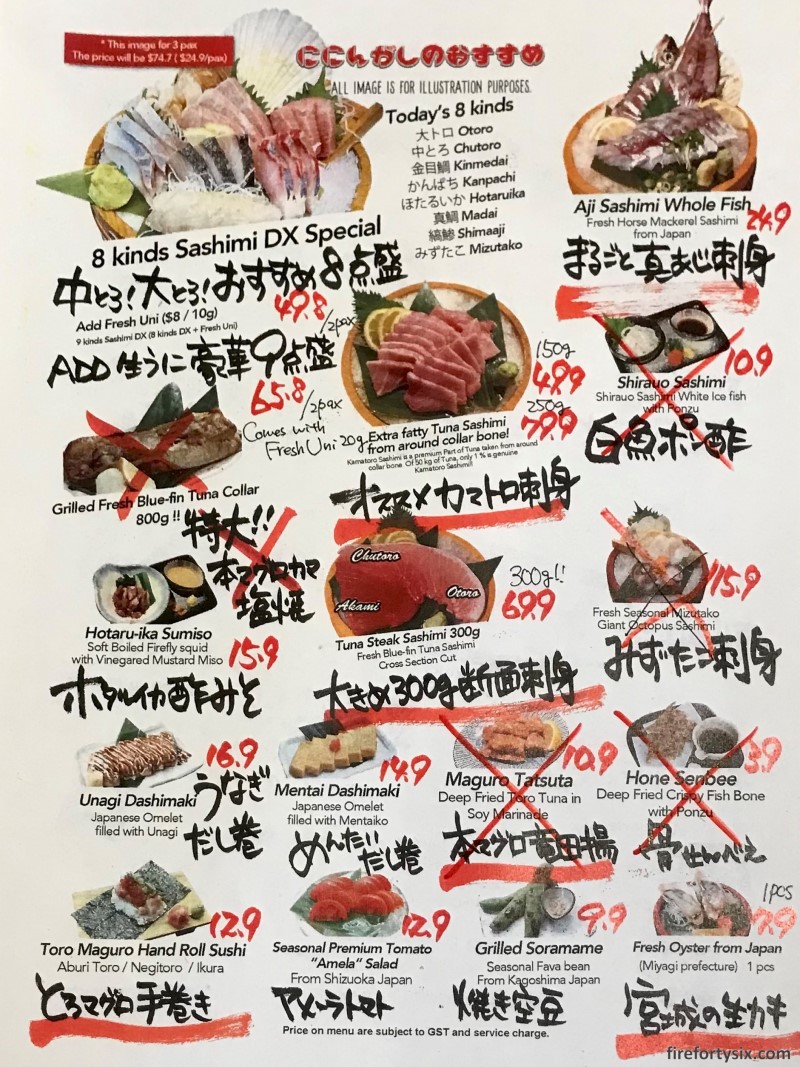
We decided to go with the DX, and our bubbly young waitress skillfully upsold us to include 20 grams of fresh uni for at total of S$65.80++.
At an average price of S$3.66++ per piece, it wasn’t cheap, but it did include pieces that we wouldn’t commonly find elsewhere. And, as we’d find out later, the seafood was really fresh and the portions were very generous.
Since lunch is our main meal of the day, we ordered one teishoku lunch set each. The Wife went with the Sun-dried Aji (Horse Mackerel) BBQ Set (S$12.50++), and I chose the Fried Aji and Oyster Set (S$12.00++). Both offered great cost-performance, and were similar to the ¥1,000 lunch specials I had quite often while working in Tokyo.
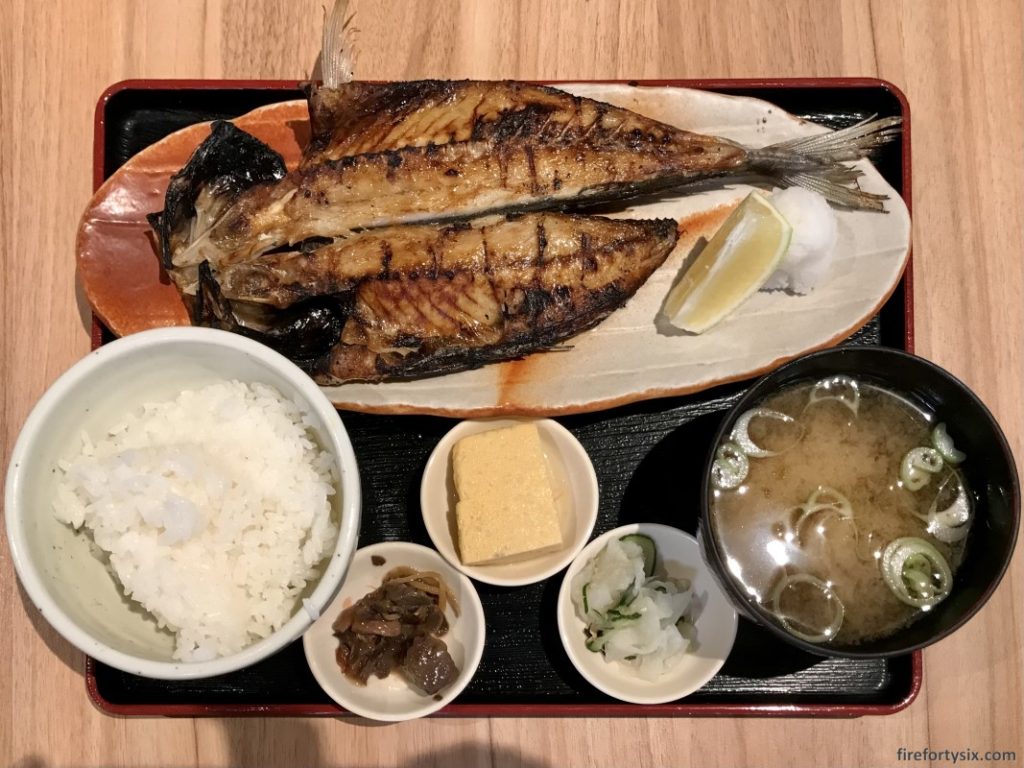
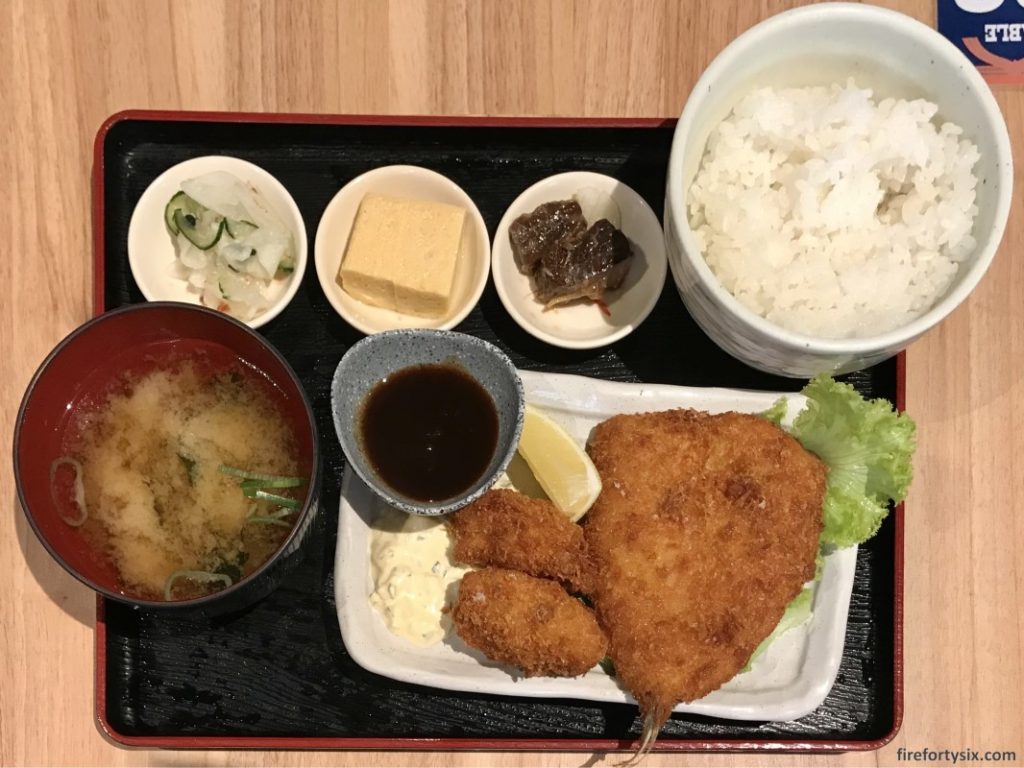

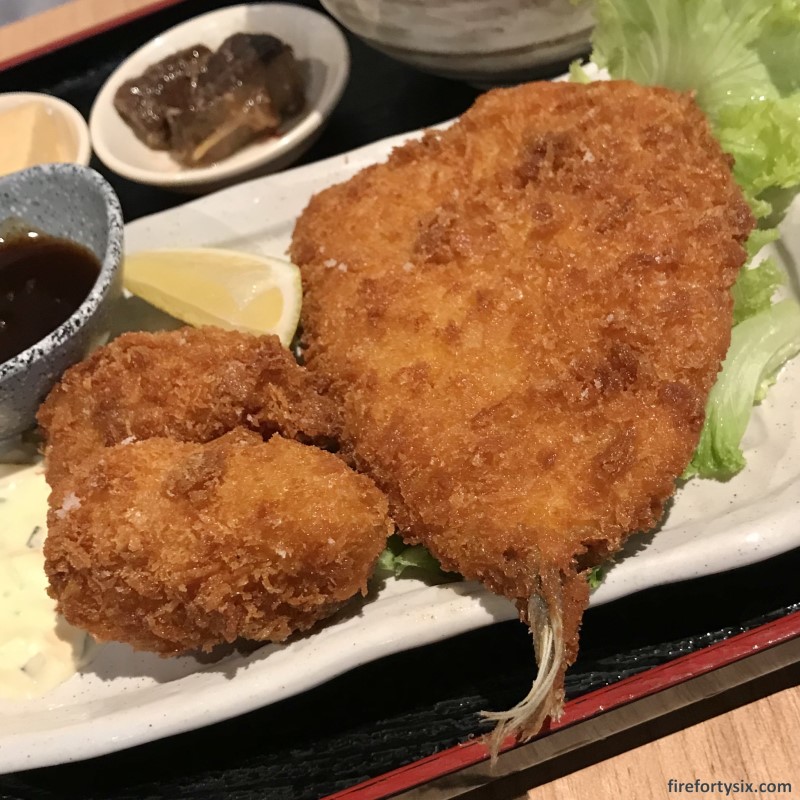
Our DX sashimi platter arrived mid-way through the meal, and we had to make space on our table just to fit the beautifully presented wooden bucket. Each item came with a laminated bookmark-sized label, making it easy to identify the nine different varieties of oishii goodness.

Although my typical sashimi sequence starts from lighter-tasting shiromi (white-fleshed fish) and progressing to heavier-tasting ones, I couldn’t resist popping the firefly squid into my mouth. It’s typically served with a side of su-miso (vinegared miso), but they’re equally delicious without any dipping sauce.
Having satisfied my initial craving, I went back to regularly scheduled programming and had a piece of the madai. It was fresh and light-tasting, with a nice chewy texture that was familiar.
Getting freshly-grated wasabi would have been the icing on the cake, but the sashimi came with a blob of dyed horseradish paste instead, typical in many restaurants in Singapore.

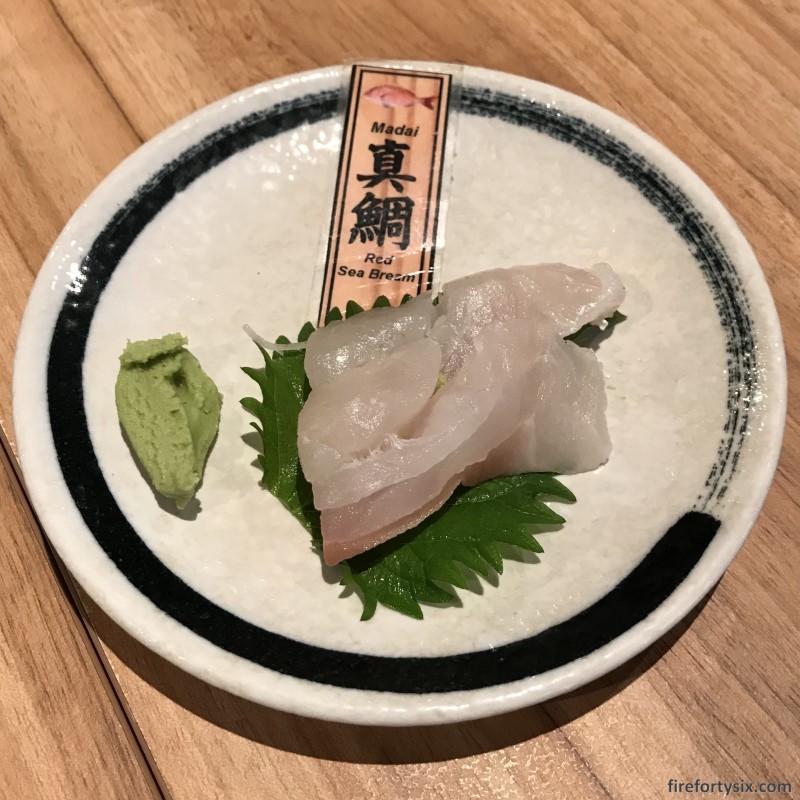
Both the sawara and kanpachi were fresh and flavourful, with the kanpachi belly cut into super thick slabs that were almost crunchy to the bite. It was so thick that the chef had to slice hash marks on the surface, commonly used on ika (squid) sashimi, to make chewing easier.
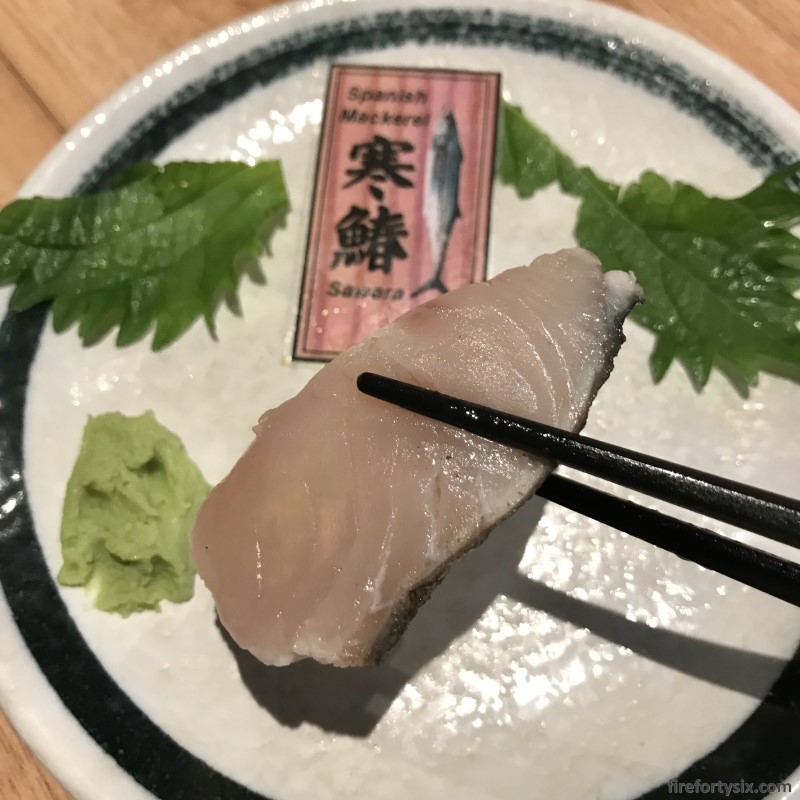
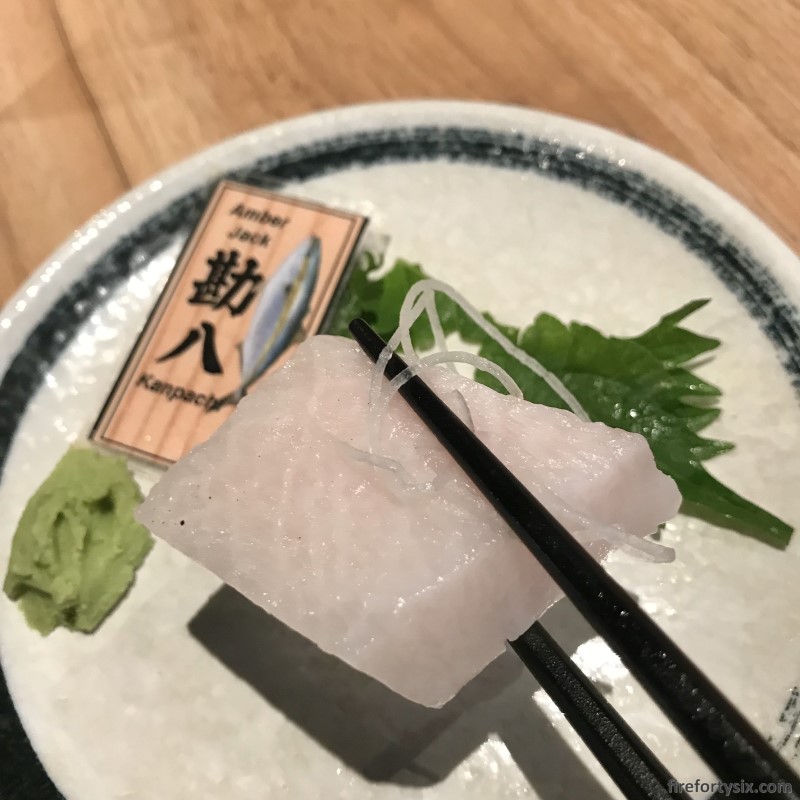
The rest of the sashimi was equally tasty, including the lightly blowtorched kinmedai and big crunchy chunks of giant octopus. I also had the two fattier cuts of tuna, chutoro and otoro, all to myself as The Wife doesn’t eat anything tuna-related. Why? Because dolphins.
I usually prefer the medium-fatty chutoro over the fatty otoro, but the chutoro that afternoon wasn’t as flavourful as the ones I’ve had elsewhere, and the otoro won out. To compensate for having fewer slices of fish, The Wife ate most of the fresh uni. I had a couple of pieces, and while I’m not a huge uni fan, I quite enjoyed the rich flavour and creamy texture.
Izakaya Niningashi also offers a platter with three different kinds of fresh Hokkaido uni (murasaki, bahun and aka) which is available year-round. Which would be the perfect dish for our good friend SL, who happens to be a huge uni addict.
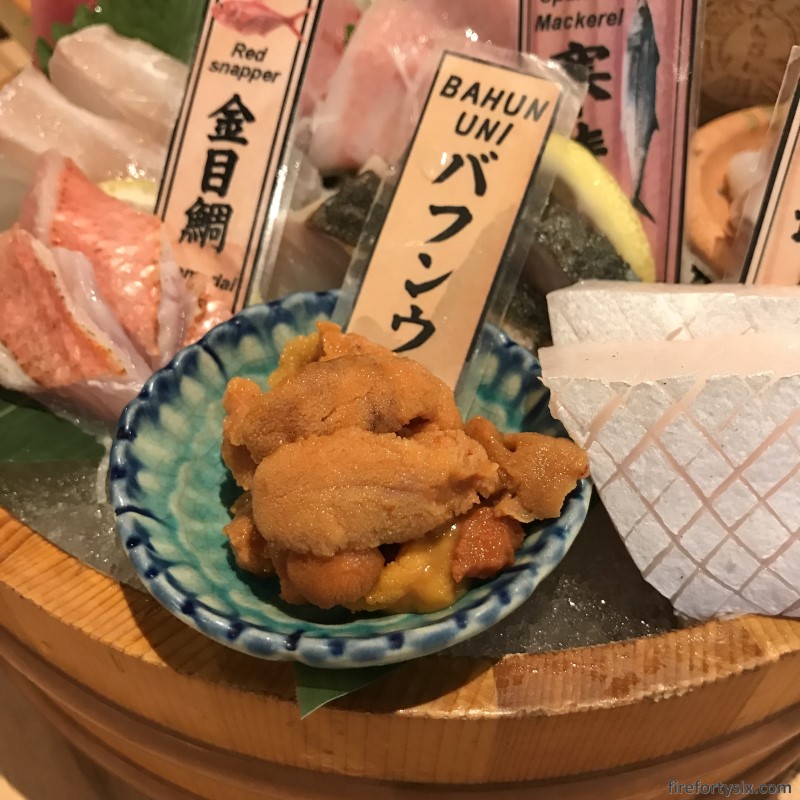
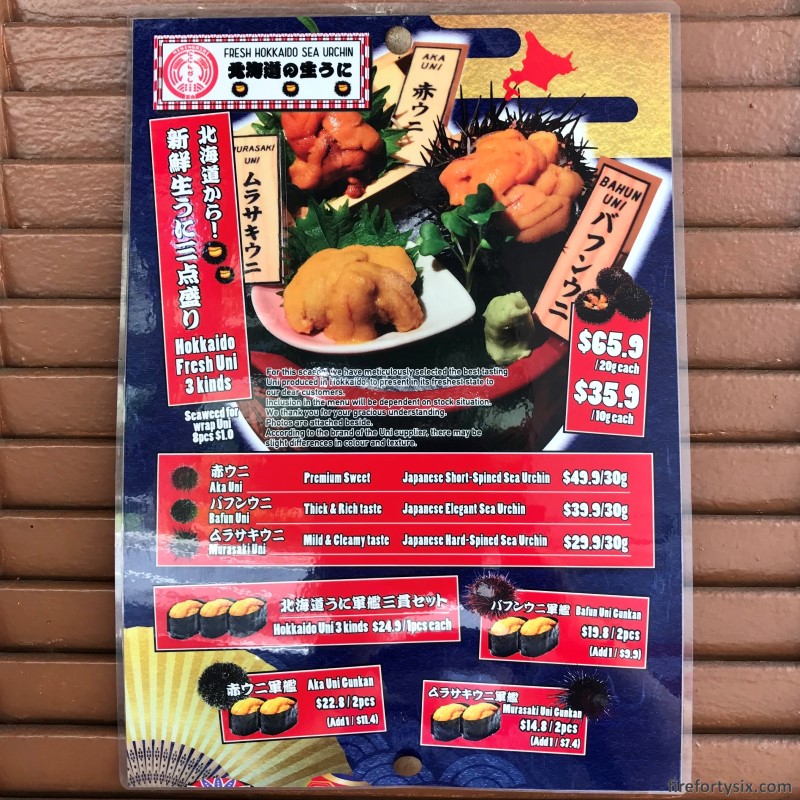
We didn’t indulge in day drinking that afternoon, but if we wanted to, there were numerous bottles of sake to choose from. Their range is pretty extensive, with nihonshu from all over Japan. Most of them are in 720ml bottles, but they offer a decent selection in smaller volumes of 130ml, 230ml and 300ml.
The menu helpfully provides Alcohol percentages, Rice polishing, SMV values and tasting notes to help you find a sake that would suit your taste. I immediately noticed that they carried our favourite Born Gold Junmai Daiginjo from Fukui prefecture, at an acceptable marked-up price of S$89.90++.
It’s an izakaya after all, and I imagine that they make most of their margin from alcohol sales. Which is probably how they manage to keep their food affordable, attracting people to dine and drink there.

We left that day very full, and very satisfied. No doubt we’ll be back again to sample more of what they have to offer (especially their fresh uni platter) and chase it down with a glass of sake. Ok, maybe more than just a glass.
I’m happy to declare that our search for good quality and cost-effective sashimi has officially ended. From now on, Izakaya Niningashi is where we’ll go whenever we’re in the mood for sashimi in Singapore.
